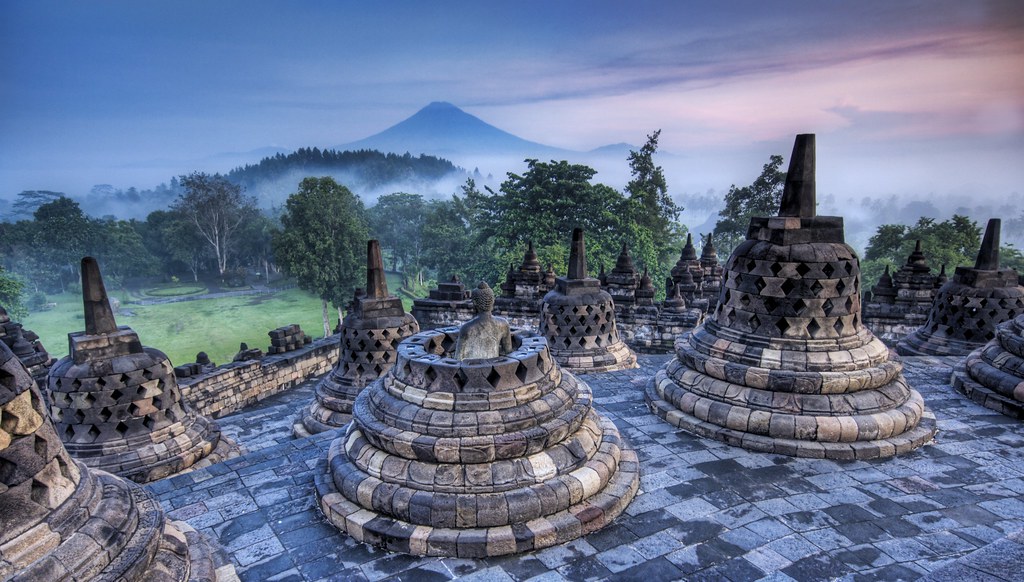Various
traditional performing arts such as Rodat, Topeng Ireng, Kubro Siswo, Jathilan,
have undergone revitalization process that includes make ups, costumes,
background music, movements and formations which made them become more attractive
public entertainments.
Traditional
performing arts are public entertainments that developed in village
settlements. They say that long time ago, while waiting for coming of
harvesting season, the farmers dwelledinto the process of creating performing
arts. Post harvesting season, they performed the creation to express
gratefulness to Gog for abundant harvest they got.
 The
other part of society was spectators usually they came in crowd without
invitation. People came from everywhere, not only from the village where it
took place but also from the surrounding villages, to watch the free of changes
performance.
The
other part of society was spectators usually they came in crowd without
invitation. People came from everywhere, not only from the village where it
took place but also from the surrounding villages, to watch the free of changes
performance.
Currently
in this modern era, many kinds of media entertainments are easy to find such as
big screen cinemas, television transmissions, radio broadcast and the internet.
The wxistence of traditional performing arts seems to have been left and
forgotten by their spectator. It, at least, has been proven by the phenomenon
of decreasing number of spectators during each performance.
Aeiswara
Sutomo (68), a person of culture in Borobudur said that the traditional
performing arts in Borobudur region exist sibce long time ago, but developed in
1930’s. The more people enjoy the traditional performances, the larger they
developed. But when people leave and forget them, they will face their natural
death.
Sutomo
told us that around 1950’s, Raden Cokrodisastro-the father of H. Boedihardjo
(ex-first director of PT Taman Wisata Candi Borobudur and ex RI’s Minister of
Information- had publicly popularized groups of traditional performing arts.
Folk performing arts around Borobudur region often performed in Borobudur
Temple tourism area and therefore made them more recognized.
 In
their developments, traditional performing arts experienced the touch of choreography
as well as innovations. One of the persons who did the revitalization was Ahmad
Sujak of Tuksongo village, Borobudur. Nbah Sujak –his popular nickname- had
transformed the traditional dance Rodat into Topeng Kawedar dances included a
new elements of masks with animal countenance such as tiger, horse, elephant, etc.
In
their developments, traditional performing arts experienced the touch of choreography
as well as innovations. One of the persons who did the revitalization was Ahmad
Sujak of Tuksongo village, Borobudur. Nbah Sujak –his popular nickname- had
transformed the traditional dance Rodat into Topeng Kawedar dances included a
new elements of masks with animal countenance such as tiger, horse, elephant, etc.
No comments:
Post a Comment